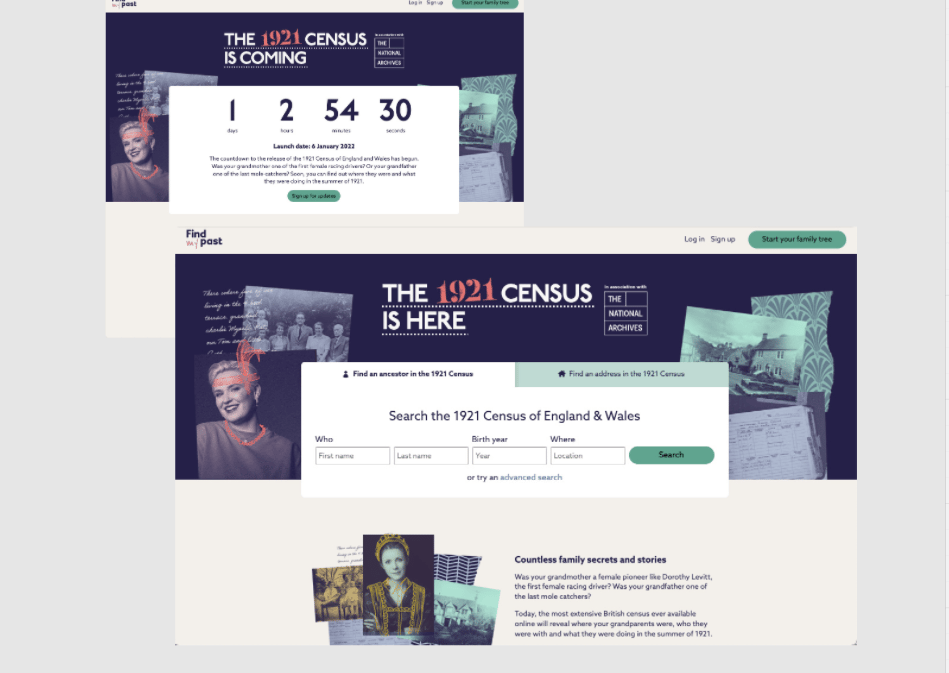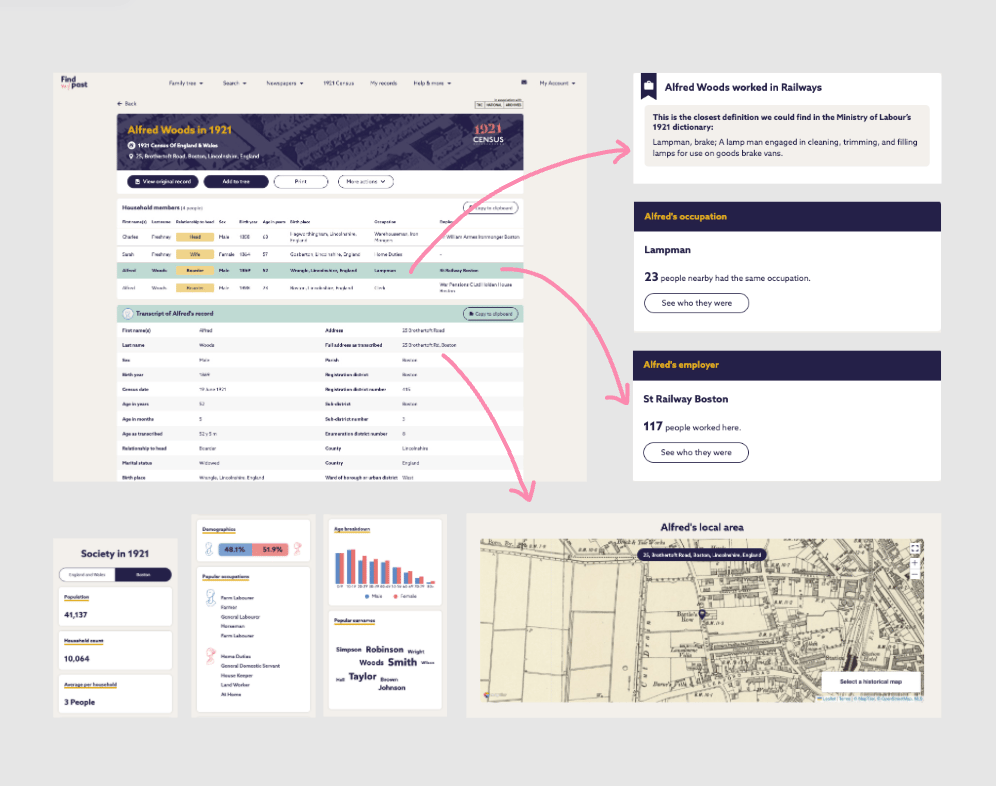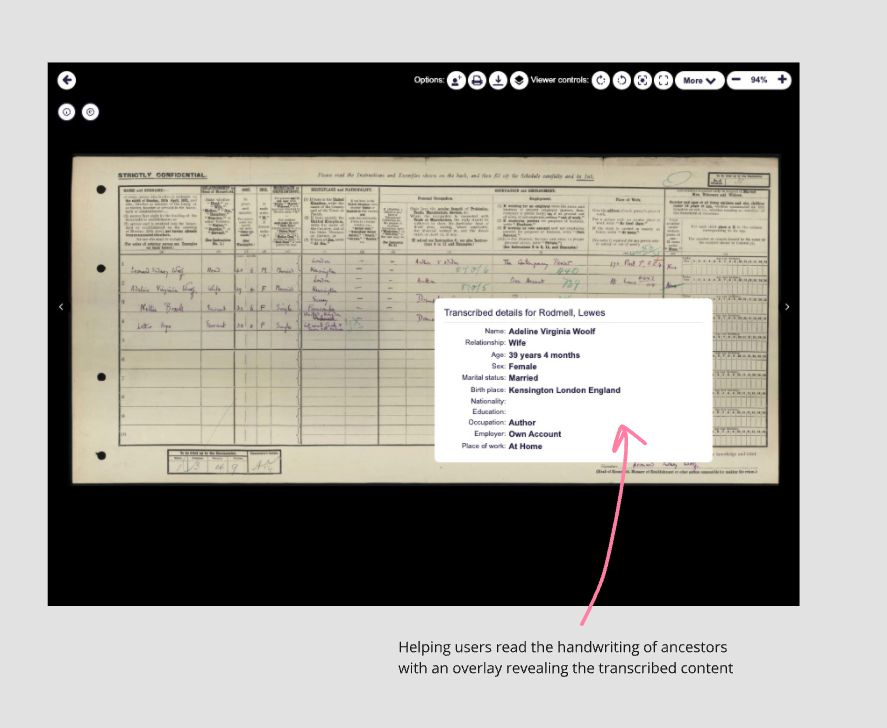Launching the 1921 Census
Transforming physical census records into a suite of data features for Findmypast customers


Problem
A census release is a huge event in the family history market as genealogists only get to access one every decade, once a 100 year rule has passed and the UK government permits the data to be accessed. Winning the 1921 Census tender enabled us to digitise and transcribe the records to create an exclusive product experience but there was a caveat: we couldn’t access the raw data until a strict privacy embargo had passed. Our challenge: plot and execute a complex 1921 product roadmap of data features and scaling work, and deliver a successful go-to-market launch.
What we did
Our approach began with nailing down what success looked like for Findmypast. There were 3 major goals:
Exceed partner expectations to increase the likelihood of future harmonious collaborations
Deliver an issue-free launch to maximise on the unique opportunity for unprecedented levels of traffic
Meet revenue targets to ensure ROI on the enormous costs of census digitisation and transcription
We pinned down requirements and started to sketch out our goals and constraints to form a rough roadmap encompassing critical deadlines for scaling, partner demos and data release dates. One of our early deadlines involved showing our partners how we planned to honour the data by creatively helping users engage with the wider social history around the records. So we analysed prior census release feedback and user research findings to draft MVPs using ‘dummy’ data from past datasets. You can see some of these features below: they ranged from tools to understand the content in context (infographics about the town compared to the wider population, an ‘occupation dictionary’ that explained an ancestor’s industry using real historic definitions from the Office of National Statistics; a place description tool that surfaced historic definitions of places in England & Wales) to a new way to help users review the original record, with an overlay to help them read their ancestors’ handwriting.
Our roadmap allowed us to demo the new product experience to our partners and product marketing teams, allowing them to be well prepared for release. On release day we had hitch-free launch that handled 10x traffic and continued to over the course of that month: we surpassed our pay-per-view takings target by 10%, and our new subs target by 4%.
You can learn more about the project from the links below:
Watch the official Findmypast 1921 Census TV advert.
Watch historian David Olusoga introduce how the 1921 Census was made.
Read this BBC article about the best secrets held in the 1921 Census.
Read this Guardian article on how the 1921 Census uncovers the personal impact of economic turmoil, housing crisis and Spanish flu pandemic.
Listen to this BBC Radio’s Woman’s Hour segment on the 1921 Census and the introduction of divorce stats.
What we achieved




We ran extensive user research interviews to understand the impact of these features and then planned them into our build plan, prioritising those we could create with dummy data.
To enable success, we had another key problem to solve: ease of purchase. The 1921 Census is provided on a pay-per-view basis, which can become very expensive for keen researchers with many 1921 ancestors to unlock, especially when already paying for a subscription. While the payments team focussed on building a streamlined payments process, our goal was to remove as much friction and anxiety as possible for users. We discovered two key problems in our user research: users sometimes couldn’t distinguish between multiple records that looked the same, which delayed their willingness to purchase. They also misunderstood that one record contained all members of a household and thought they’d have to purchase every individual member of a house. So to solve this, we built a record preview that revealed other family member names in the house, and what additional data points could be found, in order to increase their confidence.
Then we had one major last problem to solve for a smooth release: scaling. In prior years we had received an unprecedented amount of traffic that meant the load on our services was too high. So prevent this happening again, we calculated where traffic would land in the user journey, then stress-tested all the relevant services to establish what had to be strengthened well in advance of the release date.


